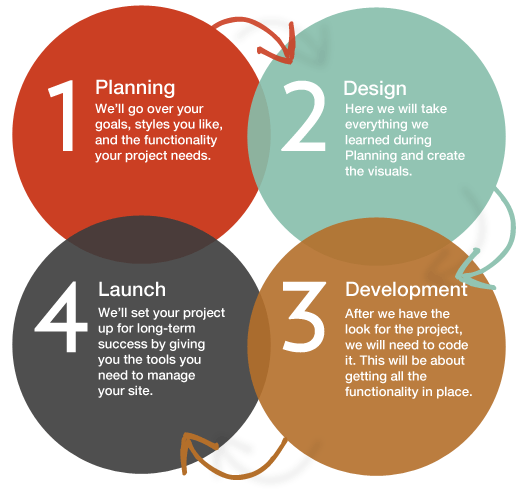Outline: A great deal of webpages simply just give lip service to convenience, such that the drawback is still spread out. Website graphic designers have to be reminded of the key convenience advice and the way it could have an impact on their design for the better.
Accessibility is often a buzz word in webpage design but the truth is that, more often than not, it remains only that – a media hype expression. Reputable, web-site designers may perhaps claim that they like to make their design as being easily accessible as is feasible, nevertheless if you check out the total number of internet sites that are realistically accessible to ALL computer users, then you will notice just how much website designers in actuality just concentrate on the majority of the market. As in a lot of circumstances, users with handicaps get the short end of the stick.
In relation to advertising and marketing, pouring a great deal of hard work and resources on for much less than 10% to 20% of the market, may well seem competitive. After all the exchange rates is bound to be still smaller than that. The actual truth however is that the law plainly says that websites need to be accessible to everyone, including customers with disabilities. Based on the Disability Discrimination Act (DDA), that has been available for more than a ten years, providers should “take justifiable methods to update a routine which makes it unreasonably troublesome for handicapped people to make use of its services. Additionally it declares that to make sure of accessibility an example of reasonable care that they need to give might contain “accessible website pages”. Just by dismissing the law, website owners are not just passing up on an chance to access an extra 10% to 20% of the market and also taking a chance on getting sued.
To ensure that you provide an accessible website, a good place to begin is obviously the W3C’s Web Accessibility Initiative (WAI) website. As this discusses the issue particularly extensively, I’d personally advise that you start up by going through their priority checkpoints, to discover if your current web site at least adheres to or uses most of the regulations.
1. The topmost priorities regarding website handiness are as follows: step one. Featuring a text equivalent for non-text features. This is to make sure that screen readers can read through those elements and summarize to visually impaired users whatever is in that section of the website. We will primarily provide you with the text equivalent just simply by making use of Alt tags or use the “longdesc”.
2. Making certain that colourful data are likewise easily available devoid of colour. This is for the colour blind.
Step three. Making improvements in the natural language of a document’s text and any text equivalents clearly identified. For instance, for those who will be working with captions it should be evident that it’s a caption designed for an image without being a portion of the paragraph, because of this things will help make perfect sense when read through a screen reader.
4. Try to make things style sheet independent. The information should be readable even in the event it is read without the style sheet. This is a typical drawback, even when it comes to very simple rendering of a web site using style sheets.
Step five. Ensure that there is an equivalent content available for dynamic content. Dynamic content, like flashing text, is a really huge problem as screen readers cannot read moving text. Likewise, individuals with disability problems may very well find it definitely tough to follow moving text. And finally, but one of the most threatening difficulty, is that specific frequencies may set off fits for individuals who may have photosensitive epilepsy. To ensure this does not happen you are able to either give a static equivalent of the dynamic content or empower clients to regulate the flickering. Should you be interested in additional information related to branding company Peterborough this web site www.titmanfirth.com/internet-marketing offers many more useful resources having to do with branding design Peterborough.
Step six. Remember to keep it sweet and simple. Staying concise and the usage of simple and easy language tends to make things less difficult for Everyone, this includes individuals with reading disabilities and frequent web users who dislike having to go through worthless fluff. The aforementioned recommendations are only the standard guidelines made available by the W3C, if you are using images, tables, frames, and such like, you will discover even even more pointers that you should follow. In the end, as a wp website designer you’ll certainly realize that following these accessibility recommendations will not only have an effect on people with disabilities, but possibly even show you how to reconsider your entire process to designing a web site. Its going to be quite a lot more work however will result in a less complicated and by and large more user-friendly web site.
Minimalism and White Space Summary: White space is really a extremely important aspect of website design. It is normally missed by people however is an upcoming trend website designers can’t afford to not recognize. If you happen to employ white space accordingly, your web site designs will undoubtedly boost noticeably.
Minimalism and white space is a quickly becoming a market trend in web design. Google is most likely the poster child for minimalism and white space, and judging only from their achievements, then we can conclude that it is the way for you to go. Just before the advantageous purposes and effects of white spaces are explained, I want to just describe briefly what minimalism and white space is, and the way they correspond with one another. White space is just the space or region between the elements of a internet site (i.e. the area between the text, images, footers, etc.).
Minimalism, in website design, is a idea wherein the type is being used as the leading design element, which will mean that images, texture, and coloration takes the back stage. Due to the way type is given emphasis in a minimalist design, more white space is normally developed.
The significant benefit of a minimalist design, whenever executed appropriately, is that using all the white space leads to less visual chaos. This in turn allows the user in terms of concentrating on the vital parts of the website mainly because unwanted parts aren’t there to disturb them. This will mean that there’s an increase in the visitor’s possibility to digest and keep the data on the webpage. The explanation for this is that given that there is much less visual stimuli, they’re able to give attention to processing the crucial details as opposed to subliminally process other extraneous details at the exact same time. Furthermore, it also clearly indicates to the customer what they can get and do on that webpage. For instance, in Google’s case, its crystal clear that the consumer needs only to type their search string inside the box and click on the button to obtain their look up results. In other internet sites, it might assist in conversions mainly because the subscribe or buy button will be more convenient to find.
Along with it’s benefits on the attention, a minimalist design likewise for the most part lead to a far more aesthetically pleasing website page. While aesthetics is most certainly truly highly subjective, generally, implementing more white space communicates ease-of-use and elegance. Note too that appearance is very powerful in web site design given that it profoundly impacts user satisfaction. The strange factor is that as user satisfaction increases, their awareness of the usability of a web site also raises, whether this is a primary result of the minimalist design or just their willingness to find out how to navigate the site much more efficiently is not always identified, but whats essential is that it has a positive effect.
Despite all the favourable factors that a minimalist design will bring it is still crucial to remember that it is the appropriate usage of white space that makes things a lot more efficient. Making use of a minimalist design and having a lot of white space isn’t going to inevitably indicate an excellent web site design. Like in many things, there’s simply no clear cut answer. You’ll need to consider all of the individual article content and data that must be on a website page to view exactly how you can utilize white space successfully.
One of the leading factors to think about when deciding to go minimalist or not will be the desire feel of the web site. As mentioned above, a minimalist design generally creates a much more classy feel. As you may know, elegance is also almost equated with luxury as well as expensiveness. Therefore, its fairly crystal clear that if your enterprise is marketing low-priced home furniture in Peterborough, internet site design of each and every page really should have a visual impact that screams very affordable but not expensive. This implies making use of plenty of big coloured fonts, sales signs, slashed prices, and considerably less white space. If someone seeking cheap furniture arrives at a webpage with just a single lounge sofa and the identify of the store on it, it isn’t unlikely that that person may presume that costs won’t be in their range and simply go to some other web page.
An additional factor to consider when playing around with white space is the concept of active and passive white space. Passive white space is employed purely to improve readability of text. Having far too little white space between characters and lines, it really is just to tricky to read. Active white space, in contrast, takes it one step further by utilising the white space to attract attention to a precise detail on the screen. For instance, by adding just a little bit more white space than usual between a paragraph sandwiched linking two others and displaying that paragraph, you automatically draw focus to that line so that even when customers may not end up reading through all of the text, they’d at least look over that important line first. The same is true for introducing white space around logos and clickable elements.
The important factor in making use of white space is that you simply have to keep on practicing to ensure that determining if more or less white space is needed for every web content. In the end, it’ll come a good deal less complicated to you and your web design will get noticed thanks to that little something customers do not realise they really pay attention to – white space.

